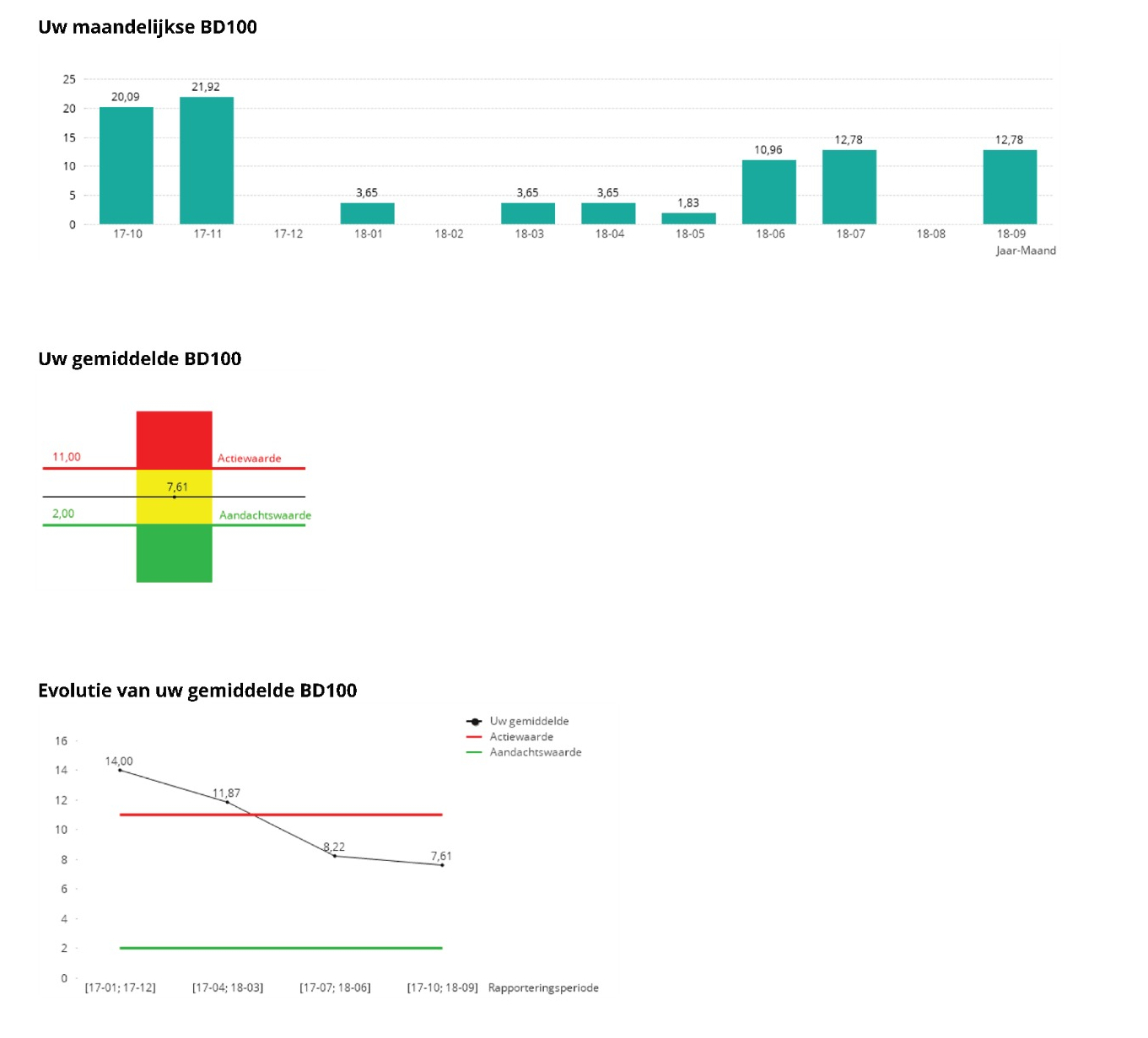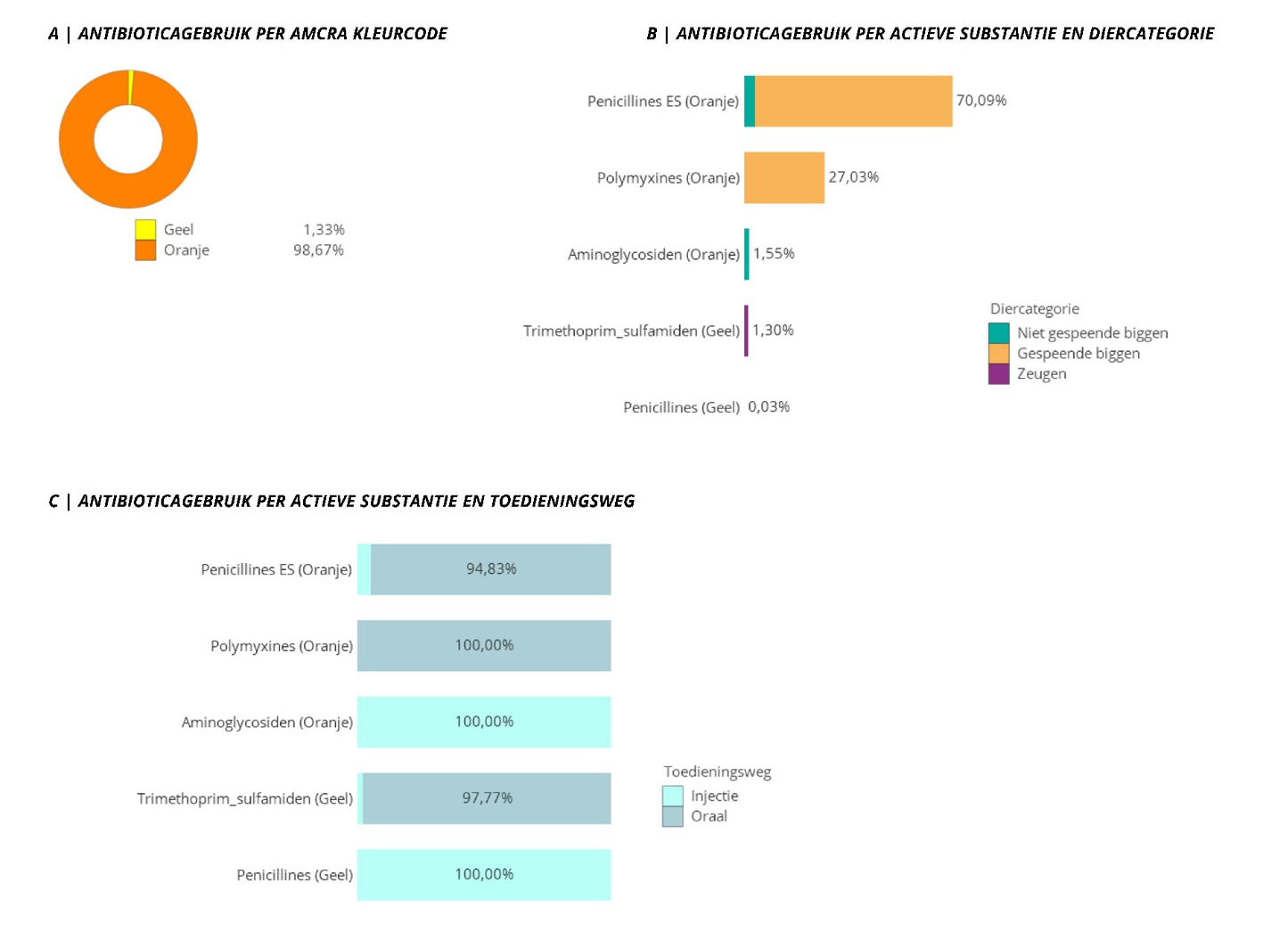AB Register
General
AB Register is an online platform established in 2014 by Belpork, the owner of the Belgian pig meat quality label BePork. It covers approx. 70% of Belgian pig farms and 80% of Belgian pork production. Halfway 2017, AB Register expanded with poultry, including turkeys, with support of the Belgian quality label Belplume, covering 90% of broiler and 15% of laying hen production in Belgium. In 2018, also Flemish dairy cattle was included, with all Flemish farms following the IKM/QFL/QMK quality scheme (>99% market coverage) being obliged to register their AMU. The data collection system AB Register is since 2018 managed by ‘AB Register vzw’, with representatives from Belpork vzw, Belplume vzw and IKM Vlaanderen vzw. In 2022, the beef sector, represented by the Belbeef quality scheme covering 30% of Belgian beef farms, joined AB Register.
Data collection
Animal subcategories: In pigs: sows/boars, finishers, weaners and sucklers. In poultry: laying hens, broilers, laying dams, broiler dams, breeding laying dams, breeding broiler dams, breeding layers and turkeys. In cattle: calves 0-3 months, calves 3-8 months, young stock 8-24 months, adult dairy cattle (these categories are available for beef and dairy animal subtypes).
Input: The system requires the providers of the antimicrobials to do the registrations; in pigs this can be vets, feed mills or pharmacists; in poultry this can be veterinarians or pharmacists and in dairy cattle only vets are allowed to register the AMU. Farmers have the authority and the responsibility to check the validity of the registrations. Mistakes should be notified to the provider, who can make changes to a limited number of input fields. The animal occupation numbers of pigs and cattle are obtained from governmental databases (pigs: quarterly capacity numbers; cattle: yearly average occupation numbers). In poultry, an additional role is foreseen for hatcheries, who are responsible for providing data about the flocks set up on the farms (start date, number of animals set up, pen number). Data input can be automatic (through xml or uploading Excel sheets) or manual.
Analysis
The dose-based unit of measurement DDDAbel (defined for Belgium at product-level) is used in the calculation of the indicator BD100 (treatment days per 100 days). To calculate the (kg) pigs at risk of treatment, standard weights of the pig subcategories proposed by EMA[1] are used. Standard weights for cattle categories are agreed with the sector. A BD100 per month is calculated for pigs and cattle, based upon which a yearly average BD100 is calculated per weight category. In poultry a BD100 is calculated per flock, using standard weights agreed with the sector. Per poultry category present at the farm, an average BD100 per pen and per farm is calculated as an average over all flocks (terminated + still running) in a preceding period of one year.
Benchmarking
In pigs, benchmarking based on the average BD100 (and reporting of the results) is done four times a year, in poultry two times and in dairy cattle once a year. Consequently, it is done per weight category. A ‘fixed benchmarking’ methodology is applied in pigs and poultry. The results of each farm are compared with one (in some poultry categories) or two threshold values (attention and action BD100) per weight category, and these values are ‘fixed’. Yet, they form part of sector-specific reduction paths (https://amcra.be/nl/visie-2024/) meaning the values are gradually reduced over time. The start-values applied until end of the 2022, and since 2023 new lower action values are in place.
In dairy cattle, ‘dynamic benchmarking’ is applied: two thresholds are set as well, but these are recalculated upon every benchmarking, and represent the median (P50) and 90th percentile (P90) of the BD100-values in the benchmark population. The benchmark population is constituted of Flemish (AB Register) and Walloon (see BIGAME) dairy cattle farms that harbour the respective categories and have data of sufficient quality.
In addition, the type of antimicrobials used is benchmarked. Three colour codes of antimicrobials are distinguished: yellow, orange and red, the latter including the 3rd/4th gen. cephalosporins and the (fluoro)quinolones. The percentage of each antimicrobial class and each colour code in the total AMU in each weight category is compared to the mean percentages over all farms.
Additionally, use of premixes and colistin is benchmarked in pigs, use of ‘red molecules’ in poultry and use of intramammary products in dairy cattle.
Reporting
In pigs, results are communicated to the farms four times a year, in poultry twice a year and in cattle once a year through an individual report (with the results of all weight categories present at the farm) made available in the AB Register portal as a pdf. Farmers can opt to share their reports with all vets delivering antimicrobials to their farm. A report is also made directly available for the herd veterinarian. For pigs and poultry also ‘nearly-real-time’ results are accessible in the AB Register portals after logging-in. These are updated overnight, hence change whenever data in AB Register is added or updated.


